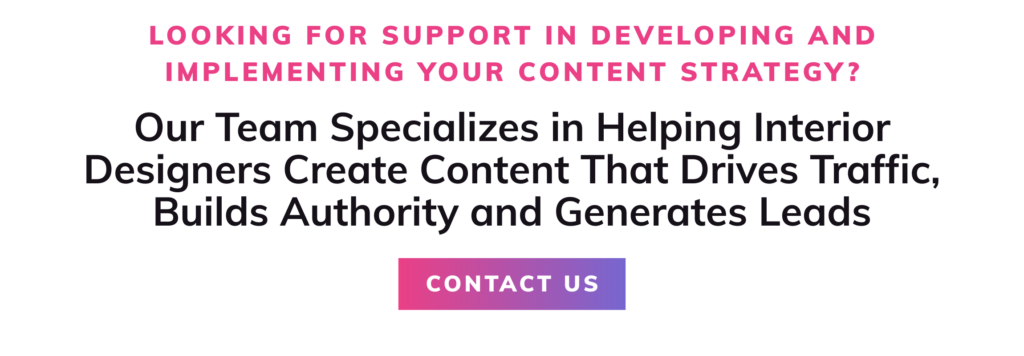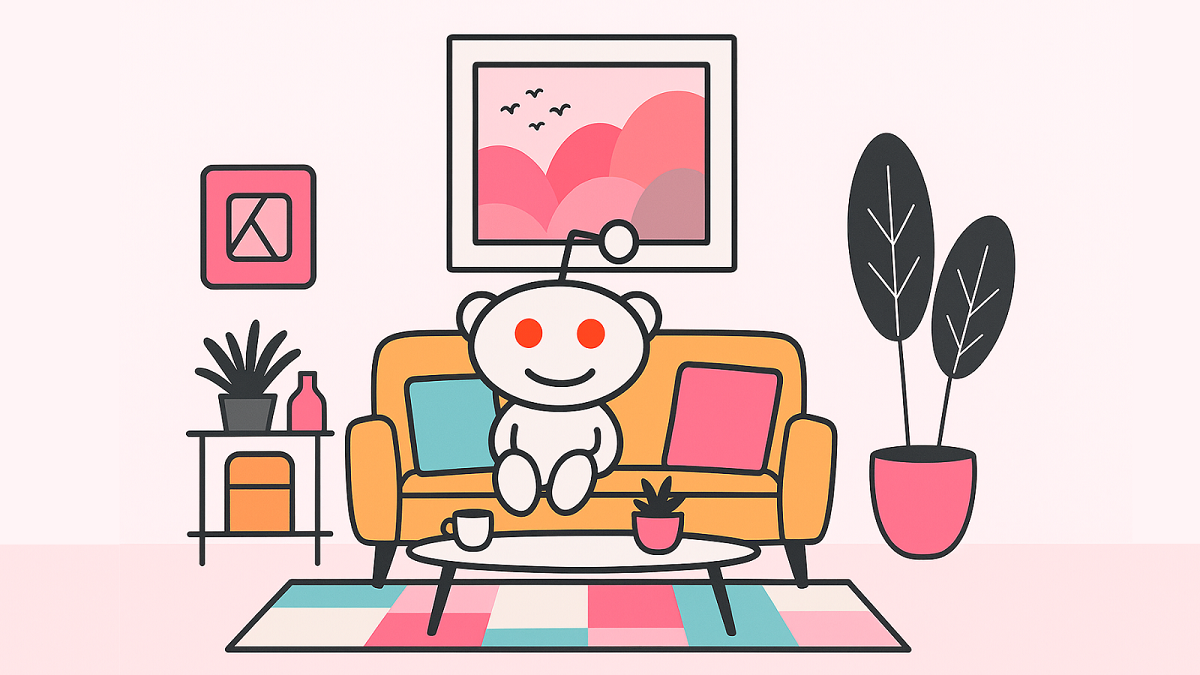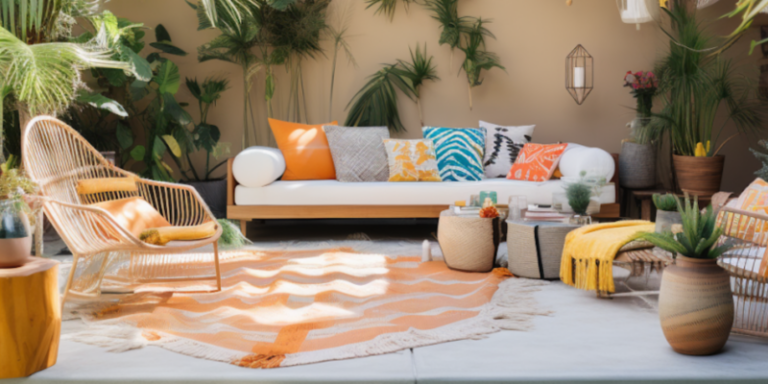In today’s digital landscape, having a beautiful website that showcases your interior design portfolio is just the beginning. While those carefully curated project photos might impress visitors who find your site, the question remains: how do they find you in the first place?
The harsh reality many designers face is that stunning “brochure websites” aren’t driving traffic or generating leads on their own. As web design and SEO experts specializing in the home and design industry, we’ve witnessed this challenge firsthand. It’s time for interior designers to think beyond the portfolio and embrace a publisher mindset.
The Limitations of the “Digital Portfolio” Approach
Picture this: You’ve invested thousands in a gorgeous website that perfectly reflects your aesthetic and showcases your best work. The photography is stunning, the layout is clean, and your brand identity shines through. It’s exactly what you wanted.
Yet months go by, and the traffic remains disappointing. Your beautiful site sits like an undiscovered gem in the vast ocean of the internet. Why? Because static portfolio sites, no matter how visually impressive, lack the magnetic content that attracts visitors through search engines and social media.
As Jim Thornton, SEO specialist at ultraviolet, points out: “95% of searches in Google are searched under 10 times per month. That’s where the gold lies—targeting these long-tail keywords that reflect specific user intent.” Without content that addresses these specific searches, your site remains invisible to potential clients actively looking for solutions you provide.
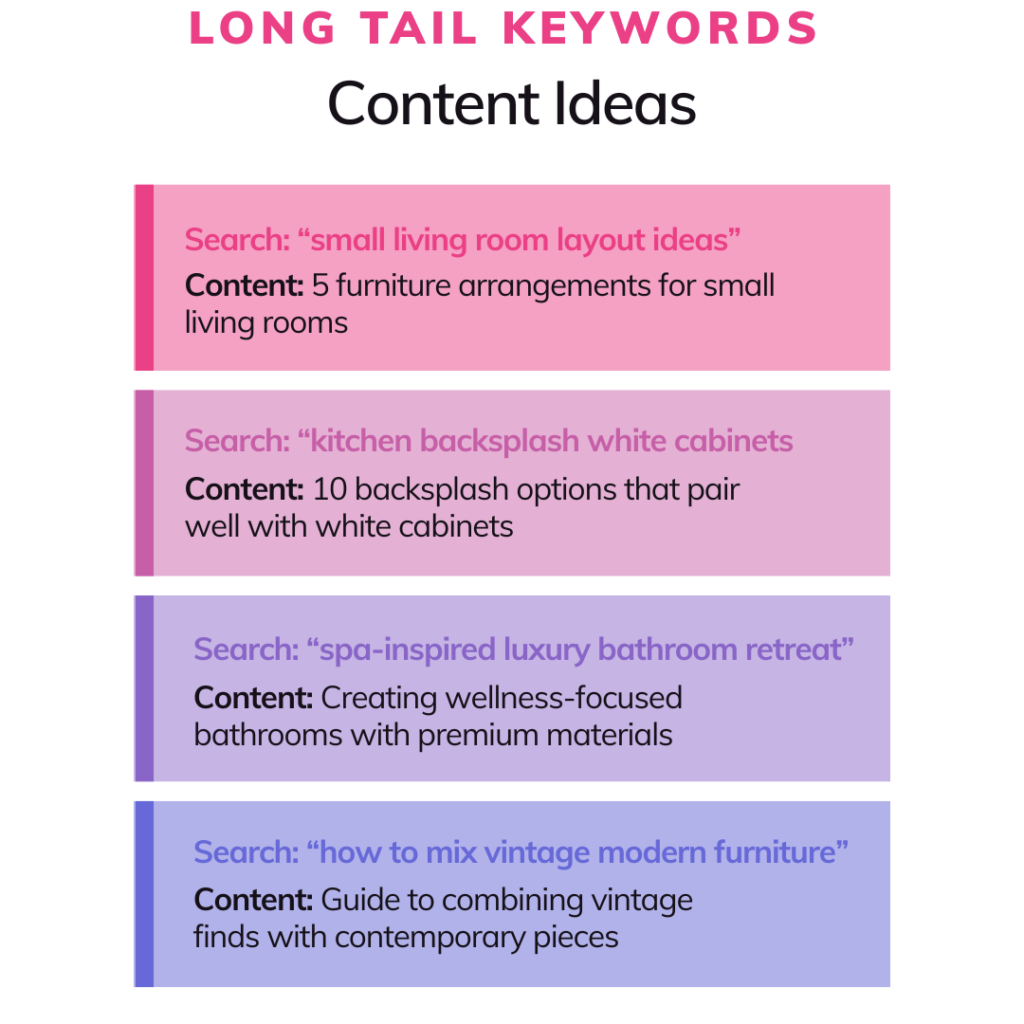
Thinking Like a Publisher: The New Paradigm
The solution lies in transforming your approach from portfolio curator to content publisher. This means creating valuable, informative content that serves multiple audiences:
- Prospective Clients: Answer their questions, address their concerns, and showcase your expertise before they even contact you.
- Past Clients: Provide ongoing inspiration and resources that connect them to your brand.
- Industry Colleagues: Position yourself as a thought leader among peers.
- Manufacturing Partners: Create content that highlights their products in real-world applications.
- Showrooms and Trade Professionals: Develop resources that facilitate better collaboration.
As Jeannie Chung of Cozy Stylish Chic noted, “I’ve discovered that our ideal client collects art, and I have not put that on our website. But I need to because I’ve realized that someone who values art will value my time.” This revelation represents the kind of strategic thinking that transforms a passive portfolio into an active lead generation tool.
SEO Strategies That Actually Work for Interior Designers
So how do you make this transformation? Here are proven strategies to help interior designers move from portfolio to publisher:
1. Know Your Audience and Niche
Define your ideal client with precision. Are they eco-conscious homeowners seeking sustainable design? Art collectors wanting to showcase their pieces? Young families seeking durability and style? Understanding your audience allows you to create content that speaks directly to their specific needs.
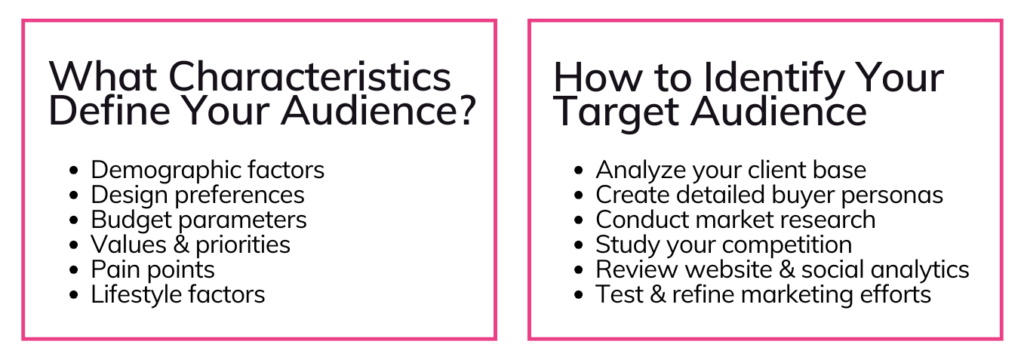
2. Conduct Strategic Keyword Research
Identify what your potential clients are actually searching for. Tools like Google Keyword Planner, Ubersuggest, SEMrush, or Ahrefs can reveal valuable insights into people’s questions and terms when looking for design services. Focus on long-tail keywords with intention behind them, like “modern farmhouse kitchen renovation in Los Angeles” rather than just “interior design.”
3. Tell Compelling Project Stories
Transform your portfolio from a mere gallery into a collection of narrative-driven case studies. Explain the challenges, solutions, and transformative results of each project. This approach engages visitors emotionally and provides rich content for search engines to index.
One interior design client we worked with saw a 65% increase in organic traffic after implementing this storytelling approach across their project pages. The key was focusing not just on the beautiful “after” photos but detailing the journey, including specific paint colors, materials, and solutions to common design challenges.
4. Create Valuable, Educational Content
Position yourself as an industry expert by creating content that educates and informs:
- Design guides and e-books
- How-to articles and tutorials
- Material and product comparisons
- Design trend analysis
- Space planning fundamentals
- Sustainable design practices
This type of content attracts visitors at various stages of their design journey, building trust and credibility long before they’re ready to hire a designer.
5. Optimize Every Visual Element
Interior design is inherently visual, making image optimization crucial. Properly named image files, detailed alt text, and compressed file sizes improve search visibility and user experience. Consider that Google Image Search drives significant traffic in the design industry—are your images working as hard as they could be?
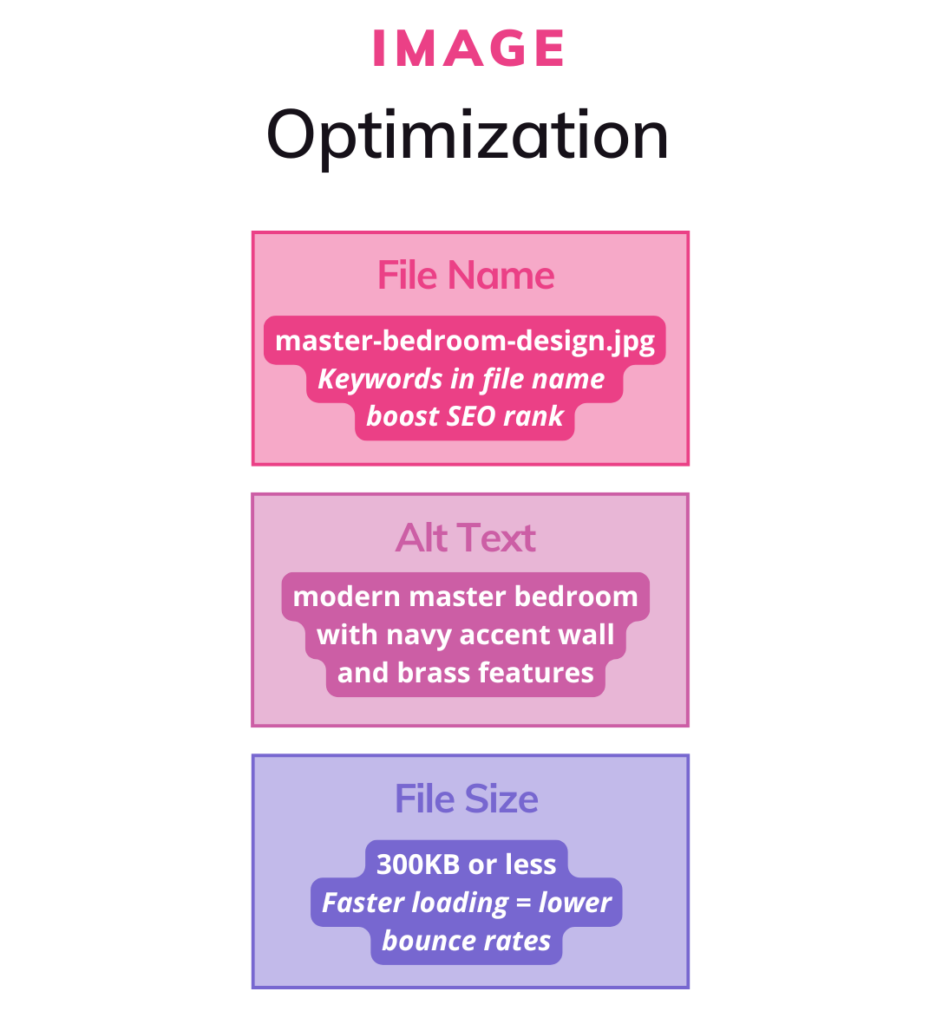
6. Build a Content Calendar That Serves Multiple Audiences
Develop a strategic content plan that addresses different audience segments throughout the year. This might include:
- Seasonal design trends and tips
- Holiday decorating guides
- Project reveals timed to industry events
- Designer spotlights and interviews
- Partner and vendor highlights
- Behind-the-scenes content
This approach ensures consistent publishing while serving diverse audience needs.
From Traffic to Clients: Completing the Journey
Remember that traffic alone isn’t the goal—qualified leads that convert to clients are. Your content strategy should include:
- Clear calls-to-action throughout your site
- Lead capture mechanisms (like downloadable resources)
- Email nurturing sequences for prospects not yet ready to commit
- Regular analysis of which content types drive the most valuable inquiries
The beauty of this publisher approach is that it creates a self-sustaining ecosystem: more content leads to more traffic, which provides data on what resonates with your audience, informing future content creation.
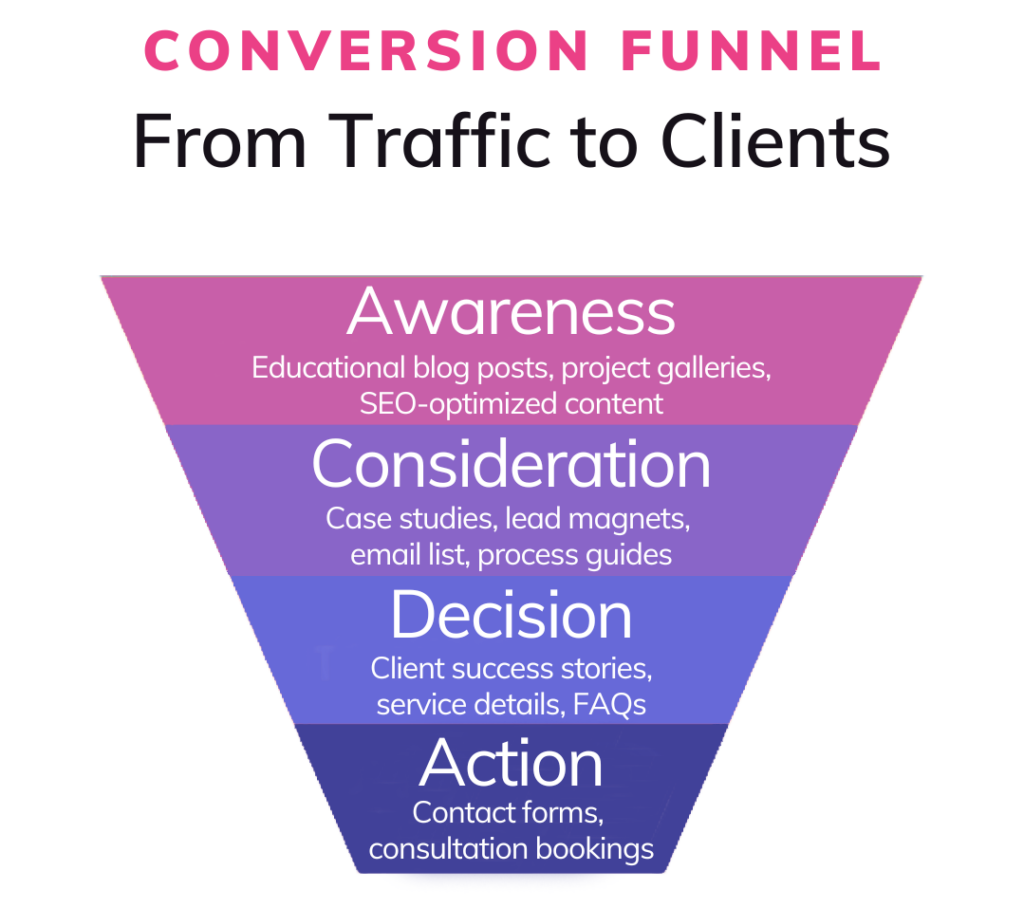
Taking the First Step
Moving from a portfolio mindset to a publisher approach doesn’t happen overnight. Still, it begins with a simple shift in perspective: seeing your website not as a static showcase but as a dynamic platform for demonstrating your expertise and building relationships.
Start by identifying three to five topics that best represent your unique perspective or approach to design. Create in-depth content around these topics, optimize them thoroughly, and promote them across your channels. Then, analyze the results and refine your approach.
The interior designers who thrive in today’s digital landscape aren’t just talented creatives—they’re savvy publishers who understand that valuable content bridges their expertise and the clients who need them.
Ready to transform your digital presence from portfolio to publisher? It starts with a content strategy that puts your expertise front and center, making your website work as hard as you do to attract and convert your ideal clients.
